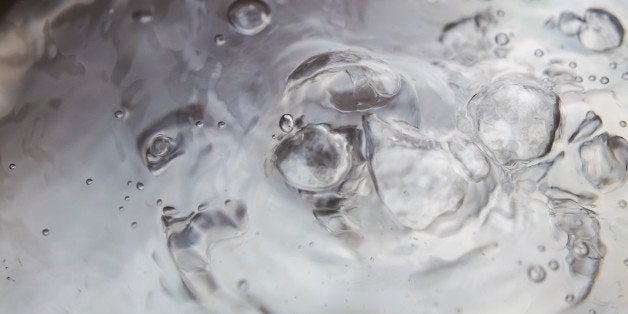
I admit it, I am a water pornographer. I show and tell people how to think about water in different ways, ways they may not have ever imagined. And I use alarming images and bold examples to seduce audiences.
As writer and public speaker, my goal is to capture people's attentions, if not their imaginations, and get them to shift their water habits. Right then. Right there. Immediate gratification.
I usually begin my presentations with a request to turn out the lights. It isn't a directive so people can better see my PowerPoint slides (or, given the title of this post, to begin anything untoward), it's an action that I explain saves water: more than half of all freshwater withdrawals in the U.S are used to create electricity. Shut off the lights and you not only save energy, you save a lot of water, too. In addition to the water-energy nexus, I also discuss the food-water nexus (agriculture consumes the most amount of water globally) and the concept of "virtual water," or imbedded water. It takes more than 1,000 gallons of water to produce a pound of beef, for example. Meanwhile, it takes just about 12 gallons of water to make a salad. Switch a burger of a salad now and again, and you're saving hundreds of gallons of water.
Still, shocking people with water facts can only go so far. It gets people to stop and listen, maybe even reflect a bit. But what is needed is sustainable attention to produce the massive change in the way we use and think about water.
The average person in the United States uses 656,000 gallons of water per year. That is twice as much as the average person in the world uses. Meanwhile, most states are experiencing some kind of water crisis, either by drought or tainted supplies.
Flint, Michigan is, of course, the poster child for water pollution. Droughts plague the Southwest. Both coasts are seeing rafts of plastic pollution off their shores, so much so there will be more plastic than fish in our oceans by 2050 if the tide of trash isn't stemmed.
I know, I get it: Water issues can seem overwhelming. That is, unless we spin them positive. Which is what I have begun doing in my speeches to corporations, colleges and communities.
Water is the biggest opportunity in the world. Innovation has produced amazing problem-solving technologies. When I relay some of these advances, people get excited and become totally engaged in the discussion.
An empty water bottle that you can affix to your bike, go for a ride, and see fill up, is an incredible breakthrough in capturing water from air. Or sponges that lap up toxins. Or ocean thermal energy possibilities. Prospects for a better world -- not just a sustainable world -- exist. By turning people's attentions to these possibilities, great change can take place.
On March 22d, World Water Day, the White House will host its "moonshot for water" summit. There, private sector leaders will be enlisted and encouraged to help reclaim and conserve water. Infrastructure investments, too, will be prodded.
I like the wording of the program. It harkens back to the same aspiration and inspiration it took to get us to land a man on the moon.
Water is in dire need of focus and serial initiatives. We need to get people to tune in even if we have to resort to verbal and visual acrobats to do it.